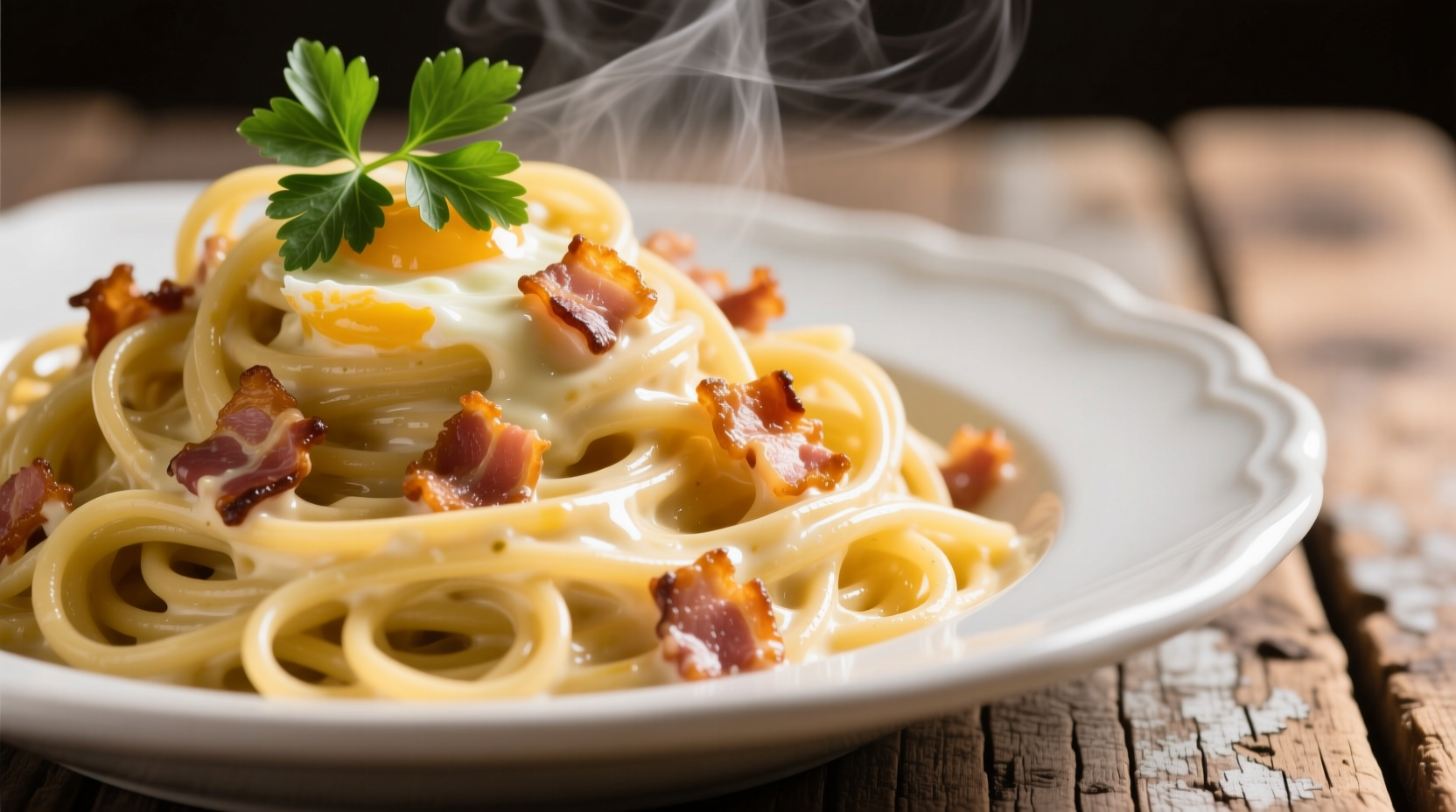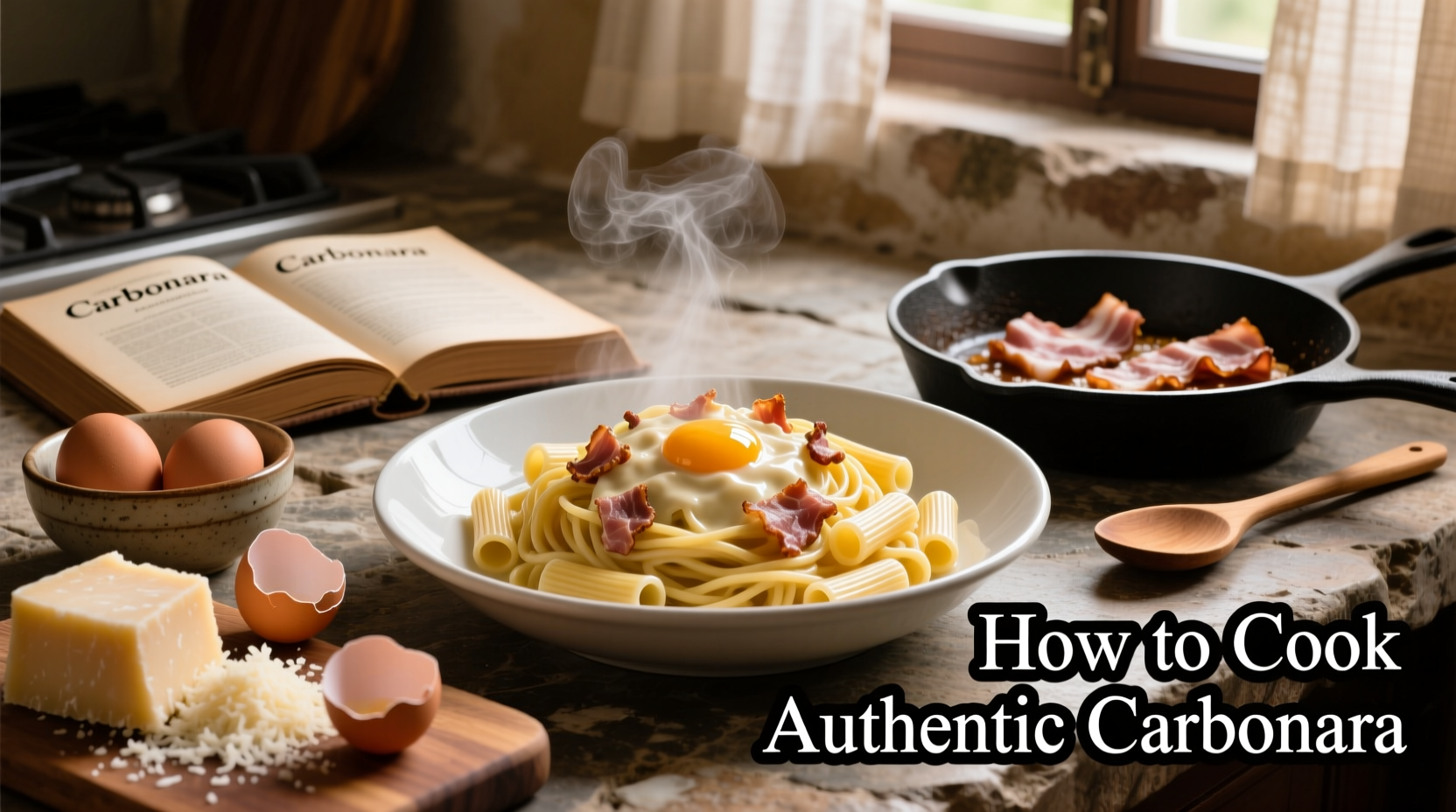The True Story Behind Carbonara
Carbonara isn't some ancient Italian tradition but a mid-20th century Roman creation that became Italy's most famous pasta dish worldwide. Despite popular belief, authentic carbonara contains no cream, garlic, or onions—these are Americanized additions that alter the dish's delicate balance. The magic happens through a careful emulsion of egg yolks and cheese, transformed by pasta water heat into a creamy sauce.
| Authentic Carbonara | Common Misconceptions |
|---|---|
| Guanciale (cured pork cheek) | Bacon or pancetta |
| Egg yolks + whole eggs | Cream substitute |
| Pecorino Romano cheese | Only Parmesan |
| Black pepper emulsion | Garlic or onions |
Why This Method Works Every Time
Food science explains carbonara's magic: the starch-rich pasta water combines with egg proteins and cheese fats to create a stable emulsion. The critical temperature range is 158-167°F (70-75°C)—hot enough to thicken the sauce but cool enough to prevent scrambled eggs. This precise balance separates authentic carbonara from common kitchen disasters.
Your Essential Carbonara Shopping List
Guanciale is non-negotiable for authentic flavor—this cured pork cheek has richer fat and deeper flavor than bacon. Look for thick-cut pieces with marbled fat. If unavailable, pancetta makes an acceptable substitute, but avoid bacon which contains liquid smoke.
Pecorino Romano provides the sharp, salty backbone. For best results, combine 70% Pecorino with 30% Parmigiano-Reggiano. Pre-grated cheese won't emulsify properly—always grate fresh.
Eggs should be room temperature. Use 1 whole egg plus 1 yolk per person. The yolks provide richness while whole eggs add structure. Never use just yolks—that's for richer Roman dishes like amatriciana.
The Foolproof Cooking Process
Equipment checklist: Large pot, frying pan, wooden spoon, mixing bowl, tongs
- Cook 100g spaghetti per person in well-salted water until al dente (reserve 1 cup pasta water)
- Fry 70g diced guanciale in cold pan until crisp (10-12 minutes on medium-low)
- Whisk 1 whole egg + 1 yolk per person with 40g grated cheese and 1 tsp coarsely ground pepper
- Combine pasta and guanciale off-heat, then gradually add egg mixture while stirring vigorously
- Add splashes of reserved pasta water until silky emulsion forms (critical step!)
The secret to perfect texture: never add eggs to hot pan. Remove pasta from heat before combining with egg mixture. The residual heat (160°F/71°C) cooks the eggs gently while creating the signature creamy texture. Stir constantly for 60 seconds—that's all it takes.

Troubleshooting Guide
Scrambled eggs? Temperature was too high. Always remove pan from heat before adding eggs.
Dry sauce? Not enough pasta water. Add 1 tablespoon at a time while stirring.
Clumpy sauce? Eggs added too quickly. Temper the eggs by slowly incorporating hot pasta.
Bland flavor? Underseasoned guanciale. Cook until deeply golden and crisp.
Serving Authentic Carbonara
Traditional Roman carbonara is served immediately in pre-warmed bowls. The sauce should coat each strand with a glossy sheen—not pool at the bottom. Finish with freshly cracked black pepper and extra Pecorino. Pair with a crisp white wine like Frascati.
Never add vegetables, cream, or garlic—these alter the dish's essential character. True carbonara celebrates simplicity: pork, cheese, eggs, and pepper in perfect harmony. The dish's name likely comes from carbonari (charcoal workers), though its exact origins remain debated among Italian food historians.
Carbonara Timeline: From Roman Streets to Global Phenomenon
Food historians trace carbonara's evolution through these key milestones:
- 1944: First documented reference in Italian writer Edda Ciano's diary mentioning "pasta alla carbonara"
- 1950s: Appears in Roman trattorias as a post-war dish using American bacon rations
- 1979: Officially recognized by Italy's Accademia Italiana della Cucina
- 1990s: Global spread with cream-based versions becoming popular outside Italy
- 2020s: Renewed interest in authentic preparation methods worldwide











 浙公网安备
33010002000092号
浙公网安备
33010002000092号 浙B2-20120091-4
浙B2-20120091-4